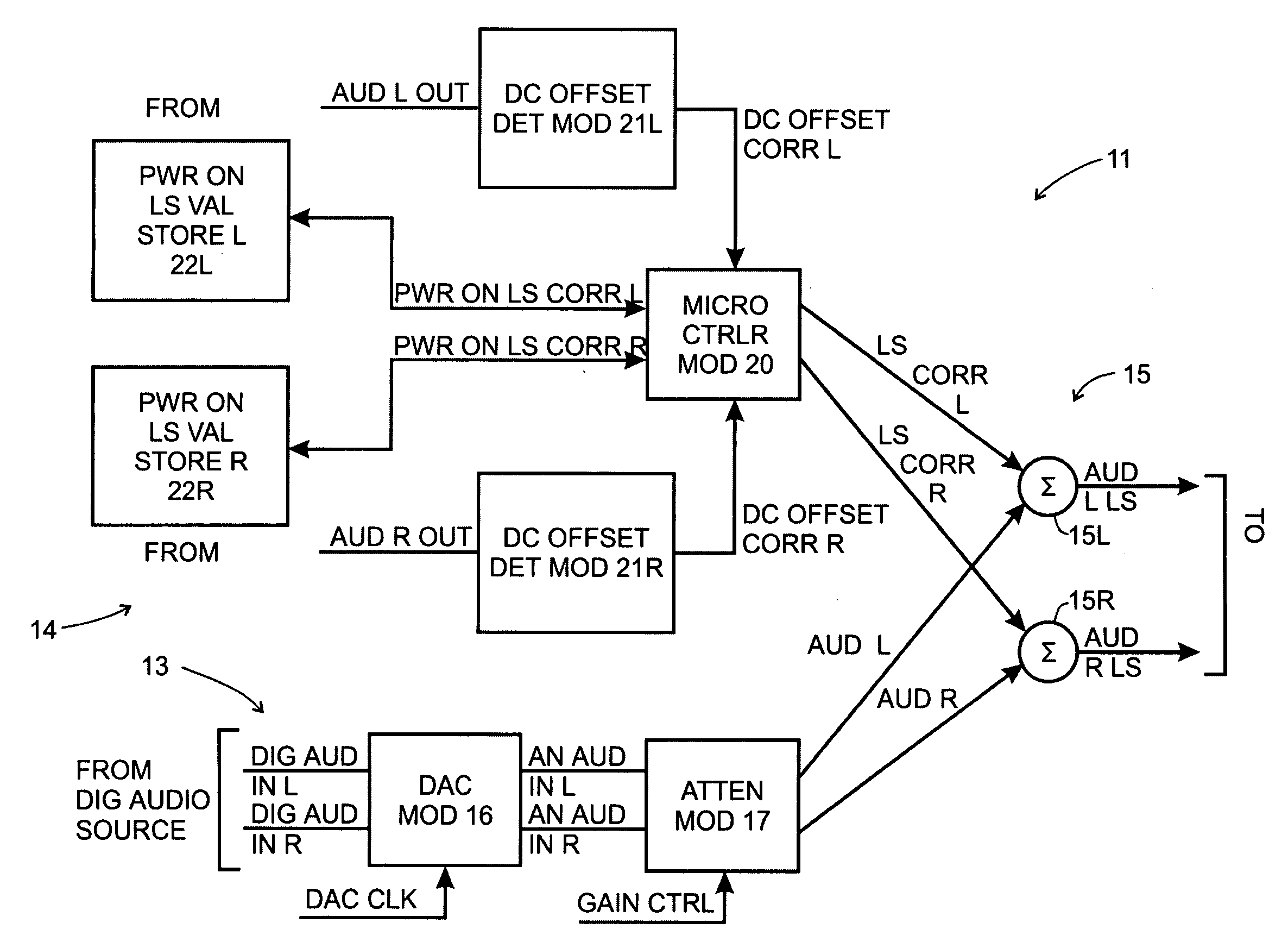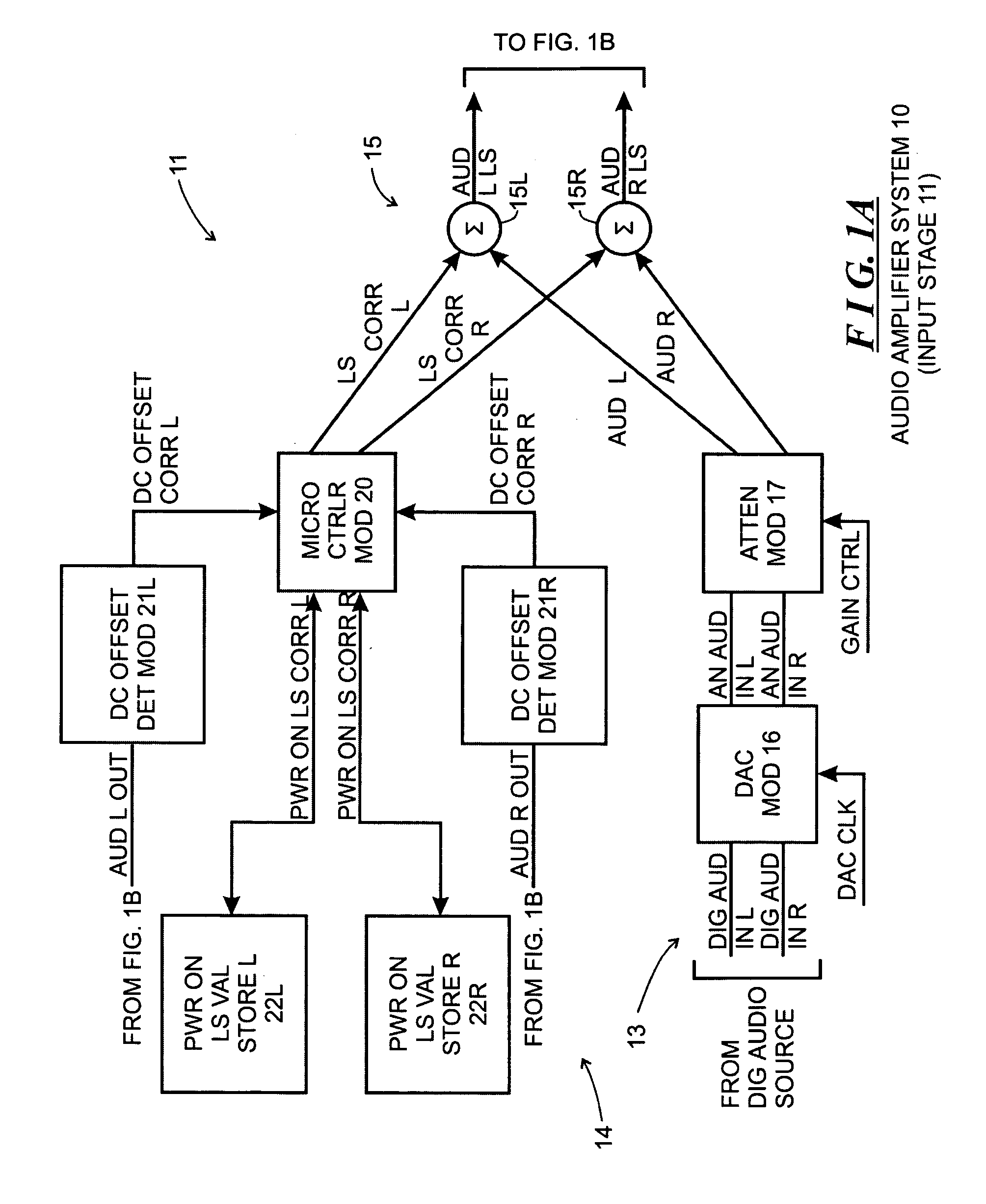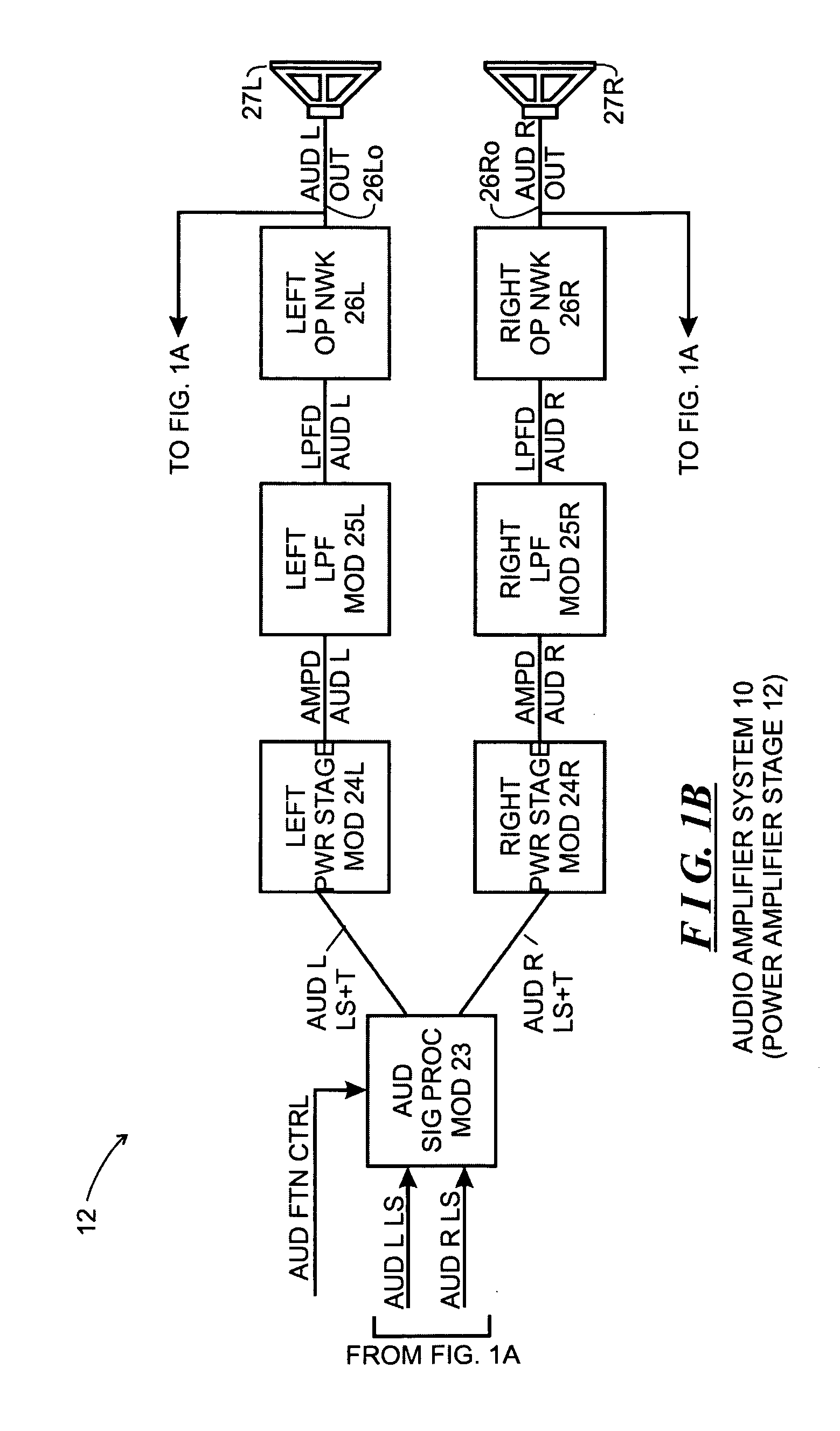System and method for minimizing DC offset in outputs of audio power amplifiers
a technology direct current offsets, applied in the field of audio power amplifiers, can solve the problems of unfavorable noise generation, low efficiency, and low efficiency, and achieve the effects of minimizing or eliminating dc offset at power-on, avoiding undesirable noise generation, and high volum
- Summary
- Abstract
- Description
- Claims
- Application Information
AI Technical Summary
Benefits of technology
Problems solved by technology
Method used
Image
Examples
Embodiment Construction
[0013]FIG. 1, comprising FIGS. 1A and 1B, depicts a functional block diagram of an audio amplifier system 10 constructed in accordance with the invention. The audio amplifier system 10 includes two general stages, including an input stage 11 (which is depicted in FIG. 1A) and a power amplifier stage 12 (which is depicted on FIG. 1B). Generally, the input stage 11 receives audio input signals, converts them as necessary from digital to analog form, attenuates the analog signals to facilitate gain control, and shifts the voltage level of the attenuated analog signals in a manner described below. In the audio amplifier system 10, the audio input signals are in digital form, and so the input stage 11 will include components to convert the digital audio input signals to analog form. The power amplifier stage 12 receives the level shifted analog signals, amplifies them and provides the amplified signals to output devices, such as speakers that can facilitate generation of sound waves for ...
PUM
 Login to View More
Login to View More Abstract
Description
Claims
Application Information
 Login to View More
Login to View More - R&D
- Intellectual Property
- Life Sciences
- Materials
- Tech Scout
- Unparalleled Data Quality
- Higher Quality Content
- 60% Fewer Hallucinations
Browse by: Latest US Patents, China's latest patents, Technical Efficacy Thesaurus, Application Domain, Technology Topic, Popular Technical Reports.
© 2025 PatSnap. All rights reserved.Legal|Privacy policy|Modern Slavery Act Transparency Statement|Sitemap|About US| Contact US: help@patsnap.com



